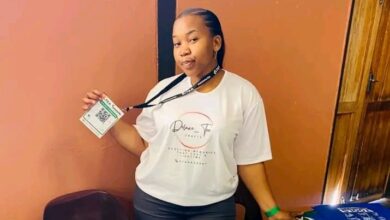Bathu vs. Drip: What Theo Baloyi Did Differently to Avoid Sinking His Business

The South African sneaker market has been electrified by two powerhouse brands: Bathu and Drip Footwear. Founded by Theo Baloyi and Lekau Sehoana, respectively, these entrepreneurs turned their dreams into thriving local businesses, achieving massive brand recognition and cultural impact. However, their approaches to growth, financial management, and brand strategy have yielded sharply different outcomes. Today, Bathu remains stable and growing, while Drip Footwear faced financial challenges, including a liquidation order. Here’s a detailed look at what Theo did right—and what Lekau could have done differently—to avoid sinking his business.
1. Sustainable vs. Aggressive Growth
One of the most critical differences between the two brands lies in their growth strategies.
• Theo Baloyi’s Approach (Bathu):
From its inception, Bathu’s growth was measured and deliberate. Baloyi focused on creating a financially sustainable business model before embarking on significant expansions. His calculated growth involved slowly opening stores in key locations and ensuring that each step was supported by robust operational infrastructure.
• Lekau Sehoana’s Approach (Drip Footwear):
Drip Footwear expanded aggressively, opening multiple stores across the country in a short period. While this rapid expansion boosted visibility and market presence, it also resulted in overextension. The financial strain associated with maintaining numerous retail locations ultimately led to a reported R20 million debt. This unsustainable growth placed tremendous pressure on the business, contributing to its financial instability and the subsequent liquidation process.
2. Robust Financial Controls vs. Financial Mismanagement
A business’s financial health depends on effective management systems and compliance with regulations.
• Theo’s Financial Savvy:
Theo Baloyi’s background as a qualified accountant gave him a strong foundation in financial management. He implemented strict financial controls and ensured compliance with necessary regulations. This approach minimized risk and provided Bathu with the stability needed to weather challenges.
• Drip’s Financial Pitfalls:
Drip Footwear, on the other hand, encountered significant financial missteps. The company faced challenges with internal financial controls, leading to liquidity problems and a foreign exchange error that drew regulatory scrutiny. Non-compliance with financial regulations resulted in asset freezes, further compounding the company’s financial woes. The Reserve Bank’s two-year investigation into Drip’s foreign exchange practices highlights the importance of robust internal oversight—something Drip failed to prioritize.
3. Market Understanding and Brand Positioning
Both Bathu and Drip began as proudly South African brands that resonated deeply with local consumers. However, their differing approaches to maintaining market relevance influenced their long-term performance.
• Bathu’s Authenticity and Market Fit:
Bathu built a strong cultural connection with its audience by celebrating African heritage and entrepreneurial spirit. Baloyi ensured the brand remained authentic, relatable, and accessible to its core market. This focus on brand identity helped Bathu establish a loyal customer base and weather market shifts.
• Drip’s Diversification at the Wrong Time:
In a bid to capture more market share, Drip launched the Sneaker Outlet, targeting lower-income customers while dealing with existing financial instability. This move divided the company’s focus and strained its resources further, rather than reinforcing its core operations. The timing of this diversification, during a period of financial distress, weakened Drip’s market position instead of strengthening it.
4. Lifestyle Choices and Public Perception
An entrepreneur’s public persona and lifestyle choices can impact how stakeholders perceive a brand, especially during periods of financial difficulty.
• Theo’s Focus on the Business:
Baloyi has maintained a professional public image centered on business growth and entrepreneurship. His focus on the brand rather than personal extravagance has reinforced Bathu’s image as a company built on discipline and long-term vision.
• Lekau’s Contrasting Image:
Sehoana has faced criticism for maintaining a lavish lifestyle even as Drip struggled financially. Many observers noted that public displays of wealth seemed at odds with Drip’s precarious financial position, creating a disconnect between leadership and the reality of the business. This perception may have undermined investor and customer confidence.
5. Financial Regulations and Compliance
Global supply chains, especially those involving foreign manufacturing, require businesses to manage currency exchange risks effectively.
• Bathu’s Risk Management:
With careful financial planning and adherence to regulations, Bathu has avoided pitfalls in managing its supply chain and finances.
• Drip’s Non-Compliance and Consequences:
Drip Footwear imported sneakers from China, making it susceptible to foreign exchange risks. Failure to comply with regulations led to financial complications, asset freezes, and prolonged investigations. These issues compounded the business’s operational challenges and contributed to its current predicament.
Key Lessons from Bathu and Drip
1. Pace Your Growth: Rapid expansion can be tempting, but it must be supported by sustainable financial structures.
2. Prioritize Financial Oversight: Implementing strong financial controls and ensuring compliance with regulations are critical for long-term stability.
3. Timing Matters: Expanding or diversifying during periods of instability can exacerbate problems rather than solve them.
4. Public Image and Leadership: A leader’s choices reflect on the business. Transparency, prudence, and focus on core values build trust.
5. Adapt and Innovate Without Losing Focus: Innovation is essential, but it must align with a business’s resources and strategic goals.
Theo Baloyi’s Bathu stands as a testament to the power of strategic planning, financial discipline, and market authenticity. In contrast, Lekau Sehoana’s Drip Footwear illustrates the dangers of overexpansion, weak financial oversight, and poorly timed business moves. While Drip’s challenges serve as cautionary lessons, they also highlight valuable insights for entrepreneurs navigating the complexities of building sustainable businesses. By learning from both success and failure, South Africa’s next generation of entrepreneurs can step confidently into the future, armed with the knowledge to avoid common pitfalls.




